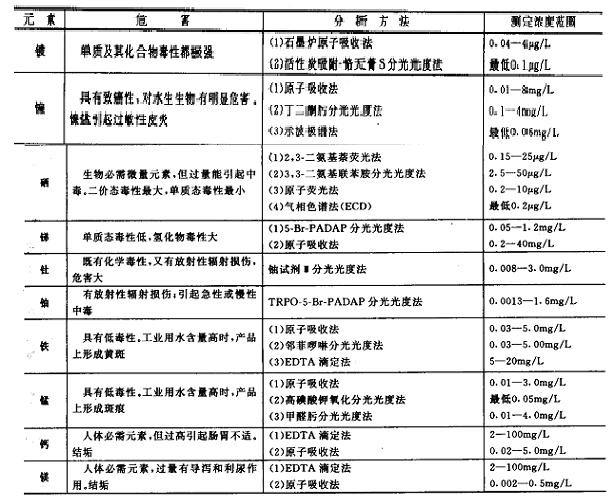022-29398436
Agriculture, forestry, animal husbandry and fishery, industrial and mining enterprises, municipal engineering,hydrology
and water conservancy, scientific research institutions, real estate and construction industry, etc

For example, the toxicity of free copper is greater than that of inert organic complex copper, Cu2 +, Cu2 (OH) 2 and Cu2 (OH) 22 + are toxic to fish, while cuhco3 +, cuco3 and Cu (CO3) 22 - are non-toxic; The toxicity of methyl mercury is higher than that of ionic mercury, the toxicity of element arsenic is very low, and arsenide is toxic; Trivalent arsenide is the most toxic. In oxygen rich water, chromium is in high oxidation state and forms soluble chromate, which has high migration and diffusion ability.
Analysis method: classical spectrophotometry
♦ Range: UG / L, mg / L, g / L
♦ Detection limit: ≤ 0.1 µ G / L (depending on application)
♦ Accuracy: < 5 - 10% of full scale, suitable for standard test solution
♦ Measurement cycle: 1 cycle / 10 - 30 minutes
♦ Flow path selection: one or more flow paths
Water quality measurement: drinking water, boiler supply water, treated sewage, cooling water, process water and surface water
1、 Measurement of heavy metal content of elements (as, CD, Co, Cr, Cu, Hg, Mn, Ni, Pb, Sb, V, Zn) in soil, groundwater and sediment samples 2. The contents of elements (silver, aluminum, arsenic, barium, beryllium, cadmium, cobalt, chromium, copper, iron, lithium, manganese, molybdenum, nickel, lead, selenium, tin, strontium, titanium, vanadium, zinc) in the water were measured, and natural and waste water samples were collected
3、 Drinking water testing, general drinking water testing items, such as Escherichia coli group, total colony count, chromaticity, odor, total hardness, turbidity, etc; At the same time, it can also detect volatile organic compounds (benzene, p-dichlorobenzene, etc.), organochlorine pesticides (Lingdan, anzafan, etc.) and organophosphorus pesticides (yipinsong, dalisong, balasong, yasuling, etc.) in drinking water
4. Determination of arsenic, cadmium, chromium, lead, cadmium and tin in food

For example, the toxicity of free copper is greater than that of inert organic complex copper, Cu2 +, Cu2 (OH) 2 and Cu2 (OH) 22 + are toxic to fish, while cuhco3 +, cuco3 and Cu (CO3) 22 - are non-toxic; The toxicity of methyl mercury is higher than that of ionic mercury, the toxicity of element arsenic is very low, and arsenide is toxic; Trivalent arsenide is the most toxic. In oxygen rich water, chromium is in high oxidation state and forms soluble chromate, which has high migration and diffusion ability.
Metal ions in solution often require the determination of their specific ion form, whether they are "free" ions or in complex state, or adsorbed on specific substances, because it determines the impact of metal ions on plant and animal life in water, and also affects the migration, transformation and retention of metal ions in water. For example, metals can affect the growth of algae, which can be used as promoters of algae growth, because some metals are nutrients needed by plants, and can also inhibit the growth of algae, because some metals are toxic to organisms. In both cases, metals must be absorbed naturally and effectively by plants through their surfaces. The most direct form of metals available is the presence of metal ions in solution. If metals and complexing agents are combined to make plants unable to metabolize them directly, they will not be easily absorbed and affect plant growth. Similarly, if metals combine with particles in water, or form colloidal precipitates such as ferric hydroxide, they will not have the same effect as free ions.
When looking for pollution sources, sometimes it also depends on the analysis of pollutant forms. For example, speciation analysis can determine whether metals in soil and water sediments are natural or caused by human pollution. Generally, the metals emitted from industrial cities are in the form of ion-exchange and carbonate bound states, while the naturally occurring heavy metals are in the form of crystal.
Not yet



